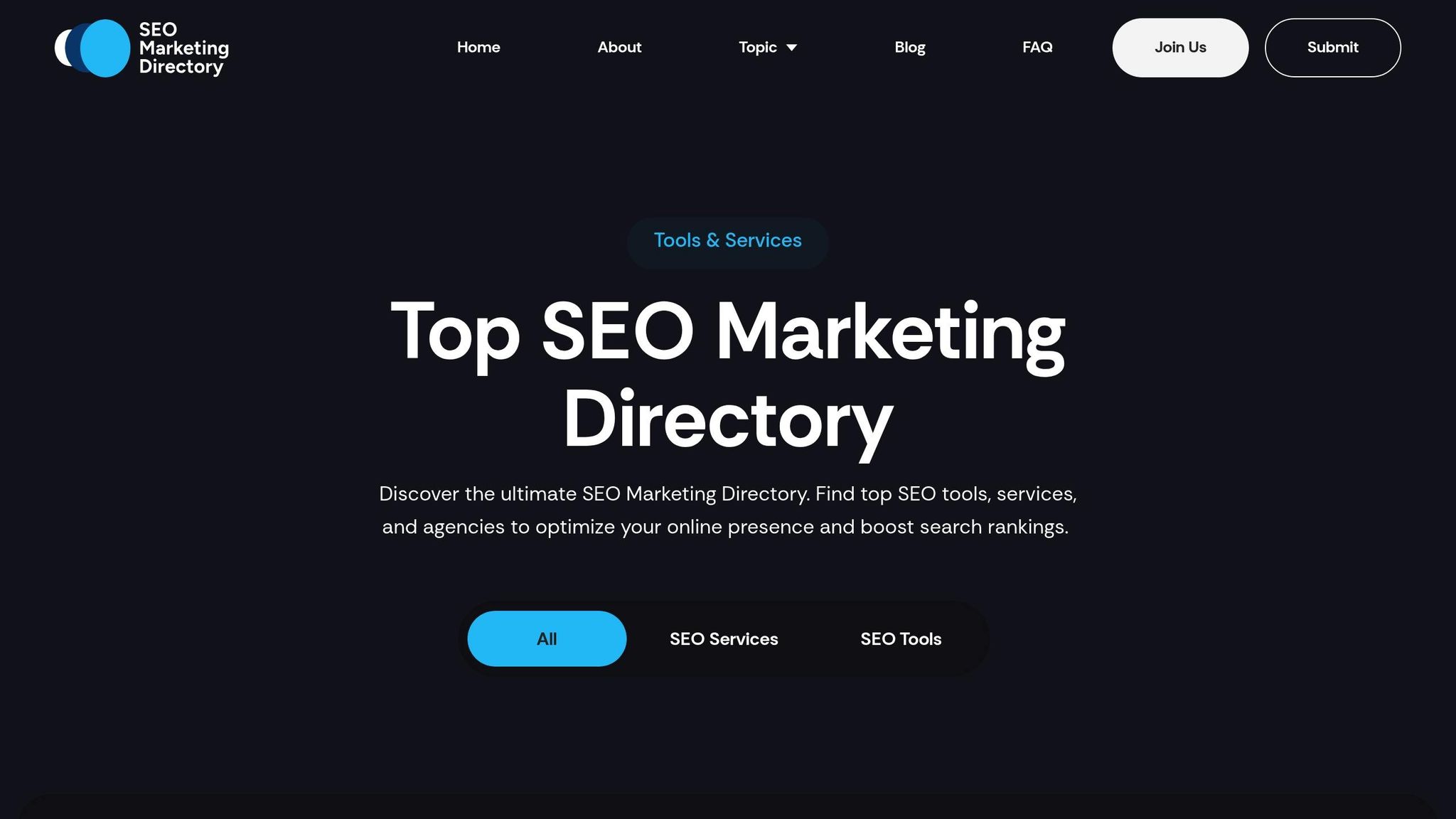SEO is no longer just a technical add-on; it’s a critical part of content creation from start to finish. When SEO experts collaborate with writers, developers, and PR teams, the result is content that not only looks good but also performs well in search results. Here’s the key takeaway: SEO should be involved early to guide decisions, align goals, and ensure content meets both user needs and search engine requirements.
Why it matters:
- Content without SEO input often fails to rank, even if it’s well-designed.
- SEO insights like keyword research and search intent improve content strategy.
- Collaboration between SEO and development ensures technical performance (e.g., site speed, mobile usability).
- SEO and PR partnerships amplify reach through backlinks and optimized distribution.
How to make it work:
- Set shared goals (e.g., organic traffic, conversion rates).
- Use clear workflows and tools for seamless collaboration.
- Regularly measure results, from search performance to workflow efficiency.
SEO isn’t just about rankings - it’s about creating a system where every team works together to produce content that drives real business outcomes.
The SEO Behind Zillow’s 1 Billion Visits/Year w/ Kristan Bauer

How SEO Works with Different Departments
SEO thrives on collaboration. It’s not a solo act - it’s a team effort that connects multiple departments to create a well-rounded content strategy. By combining SEO expertise with the unique strengths of other teams, businesses can build workflows that deliver results. Let’s take a closer look at how SEO works hand-in-hand with content strategy, development, and public relations to achieve success.
SEO's Role in Content Strategy Planning
When it comes to planning content, SEO professionals and content strategists are a powerhouse duo. While SEO specialists bring keyword research and competitive analysis to the table, content strategists focus on creativity and brand alignment. Together, they create content that not only ranks well but also resonates with audiences.
Take search intent analysis, for example. SEO teams help content strategists figure out what users are actually looking for when they search for specific terms. For instance, a search for "project management software" might indicate a need for product comparisons, how-to guides, or buying options. Knowing this, content teams can tailor their approach to meet those needs.
SEO insights also play a big role in content prioritization. When resources are tight, SEO data helps teams focus on topics that offer the highest return. This could include seasonal trends, rising search terms, or content formats that perform well in search engines.
The collaboration doesn’t stop there. SEO professionals assist with editorial calendars, offering timing recommendations based on search trends and competitive shifts. They also guide strategists on how to group content effectively to build authority on key topics. This partnership ensures that every piece of content contributes to broader business goals.
SEO and Development Team Collaboration
The partnership between SEO and development teams is all about creating a strong technical foundation. After all, even the best content won’t perform if it’s not discoverable or user-friendly. That’s where developers come in - they turn SEO requirements into technical realities.
One major area of collaboration is site speed optimization. SEO teams identify performance issues that could hurt rankings or frustrate users, while developers tackle solutions like compressing images, minifying code, and implementing caching. The result? Faster load times across all devices.
Mobile usability is another priority. SEO teams flag issues, and developers ensure content works seamlessly on mobile devices through responsive designs and optimizations.
Then there’s structured data. SEO teams decide which schema markup will enhance search visibility - think rich snippets or featured results - while developers handle the implementation. This teamwork can significantly improve how content appears in search results, boosting click-through rates.
Developers also assist with crawlability and indexing. They optimize URL structures, manage redirects, and ensure search engines can easily access and understand the site’s content. Additionally, they help SEO teams by optimizing content management systems, streamlining workflows, and embedding SEO best practices into templates. Together, they create a seamless system that supports long-term success.
SEO and PR: Expanding Content Reach
If technical collaboration makes content accessible, teaming up with PR takes it to the next level by amplifying its reach. When SEO and PR join forces, they create a powerful combination that improves visibility, credibility, and brand authority.
For instance, link building and digital PR go hand in hand. PR teams craft compelling stories and leverage media relationships, while SEO teams identify authoritative sites for backlinks. This approach not only boosts search rankings but also enhances brand reputation.
PR and SEO also team up for brand monitoring. They identify unlinked mentions of the brand and turn them into backlink opportunities, further strengthening the site’s authority.
When it comes to content distribution, PR professionals know the right outlets, and SEO teams understand which platforms offer the most search value. Together, they ensure content reaches the right audience while maximizing its impact on search performance.
Even crisis management sees benefits from this collaboration. Whether it’s addressing negative press or improving search result management, PR and SEO work together to create positive content, secure coverage from trusted sources, and optimize existing material.
Finally, they collaborate on thought leadership content. PR teams secure speaking engagements and media opportunities, while SEO ensures related content is optimized to capture search traffic. This creates multiple ways for audiences to engage with the brand, reinforcing its expertise and authority.
Best Practices for Cross-Team SEO Collaboration
Making cross-team SEO collaboration work smoothly requires thoughtful planning, clear communication, and well-aligned systems. To ensure success, teams need to define measurable goals, create detailed documentation, and address common challenges head-on.
Setting Shared Goals and Metrics
The key to effective collaboration is ensuring that everyone has a shared understanding of success. When SEO teams and other departments work with different priorities or definitions of achievement, friction is almost guaranteed. The solution? Create shared goals that connect SEO efforts to the company’s broader business objectives.
For example, unite SEO and content teams around metrics like organic traffic, time on page, and conversion rates. For development teams, focus on technical SEO metrics alongside user experience indicators like Core Web Vitals and page load speeds.
It’s also helpful to align metrics with the customer journey. Instead of having SEO focus only on rankings while PR measures media mentions, both teams can collaborate to boost brand visibility across all channels. This could involve tracking the combined impact of media coverage and organic search presence on overall brand awareness.
Regular alignment sessions are another must. These meetings give teams the opportunity to report on their progress toward shared objectives and adjust strategies when market conditions or company priorities shift.
Finally, ensure that individual team goals contribute to company-wide targets. For instance, if a development team’s improvements in site speed directly enhance SEO’s organic traffic numbers, and both efforts drive revenue growth, each team can see how their work fits into the bigger picture.
Building Shared Documentation and Workflows
Once goals are set, it’s time to streamline processes with standardized documentation. Clear and shared workflows are the backbone of effective collaboration. Without them, teams risk duplicating efforts, missing deadlines, or working at cross-purposes.
Start by creating content briefs that incorporate SEO requirements, PR messaging, and any technical constraints. When all teams’ needs are considered from the beginning, content creation becomes more efficient and aligned.
Editorial calendars are another valuable tool. These should include publication dates, promotion timelines, technical requirements, and SEO deadlines. This level of visibility allows teams to plan their work effectively and spot dependencies early.
Shared task management platforms can also reduce confusion. When SEO teams have access to development sprints, content schedules, and PR campaign timelines in one central location, it’s easier to coordinate efforts. These platforms also promote transparency around workloads, helping teams identify when colleagues might need extra support.
Documenting workflows is equally important. Clearly outline what happens at each stage of a project, when it occurs, and how teams interact. For instance, specify that SEO reviews should take place before content is handed off to PR for promotion, or that technical SEO audits must be completed during development planning. These predictable workflows help reduce friction and keep projects on track.
Lastly, treat documentation as a living resource. Regular reviews allow teams to identify gaps, update outdated processes, and find ways to improve collaboration. Teams that continuously refine their workflows tend to see better results over time.
Solving Common Collaboration Problems
Even the best teams encounter challenges when working together. Organizations that excel at cross-team SEO collaboration have systems in place to address these issues before they derail progress.
Here are some common problems and solutions:
- Miscommunication: Create a shared glossary of terms so everyone speaks the same language.
- Conflicting priorities: Use a priority framework to guide decision-making when resources are tight.
- Isolated workflows: Develop clear handoff protocols to ensure work transitions smoothly between teams.
- Resource constraints: Hold capacity planning sessions to understand workloads and plan projects realistically.
- Feedback loops: Schedule regular retrospectives to discuss what’s working and what needs improvement.
Building a culture of psychological safety is essential for addressing these challenges. When team members feel comfortable raising concerns without fear of blame, potential issues can be resolved early, before they escalate. This requires leadership support and a commitment to transparency over perfection.
Measuring SEO's Impact on Workflow Success
Understanding how SEO contributes to cross-team workflows means tying search performance directly to measurable business outcomes. Let’s explore how specific metrics can highlight SEO's impact on business results and collaborative processes.
Connecting SEO Metrics to Business Results
To showcase SEO's value, focus on linking search performance to meaningful business outcomes instead of relying solely on surface-level metrics. Here are some ways to make those connections:
- Revenue attribution: This metric tracks how organic search plays a role in the customer journey. It includes assisted conversions, which show how organic touchpoints influence customers who ultimately convert through other channels like email or direct visits.
- Content performance amplification: When SEO teams collaborate with content and PR teams, their combined efforts often create a bigger impact than individual contributions. Metrics like content engagement rates, social shares, and media pickups, along with organic visibility, can illustrate how SEO enhances content distribution and reach across multiple channels.
- Technical improvements: Collaboration between SEO and development teams often leads to measurable user experience upgrades. Metrics like Core Web Vitals scores, page load times, and mobile usability improvements can demonstrate how these technical enhancements reduce bounce rates and increase conversions across all traffic sources - not just organic search.
- Brand visibility expansion: SEO's partnership with PR and marketing teams can amplify brand awareness. Metrics like branded search volume, featured snippet captures, and knowledge panel appearances, combined with traditional PR metrics like media mentions and sentiment analysis, show how SEO strengthens overall brand visibility.
Tracking Collaborative Success Metrics
Beyond tracking financial and engagement outcomes, measuring how well teams work together can highlight SEO's broader value. This requires specialized dashboards and reporting systems that capture both individual and collective contributions.
- Unified dashboards: Consolidate SEO, content, and development metrics into one place. Establish cross-functional KPIs to measure workflow efficiency and quality. For example, track "content velocity", which measures the time it takes for content to move from creation to publication, promotion, and search visibility. This reflects the efficiency of the entire workflow rather than just individual team efforts.
- Workflow efficiency: Pinpoint inefficiencies by monitoring project completion times, revision cycles, and handoff delays between teams. For instance, if SEO integration reduces the number of content revisions or speeds up technical implementations, these benefits can be quantified.
- Quality improvements: Metrics like content performance gains or user experience enhancements can showcase how collaboration improves outcomes. For example, when SEO insights shape content strategies or technical optimizations, the results often outperform siloed efforts.
- Resource optimization: Shared workflows often reduce duplicated efforts, shorten project timelines, and improve resource allocation. For example, SEO-driven keyword research can inform both content creation and paid advertising campaigns, delivering value across multiple initiatives.
Using Reporting to Drive Collaboration
Regular reporting cycles are essential for turning measurement into action. Weekly reports can track short-term progress on collaborative projects, while monthly reviews assess the broader impact of cross-team efforts. Quarterly business reviews can connect collaborative SEO metrics to overall company performance, providing tangible proof of the value of integrated workflows.
Organizations that thrive in this area create feedback loops where insights from reporting directly influence future strategies. When teams see clear evidence of how their collaboration drives business success, they’re more motivated to maintain and improve these partnerships.
sbb-itb-5be333f
Using the Top SEO Marketing Directory for Better Collaboration

Managing complex SEO workflows requires the right tools and expert support. The Top SEO Marketing Directory offers a curated list of resources to help businesses find specialized solutions. These tools improve team collaboration and streamline SEO processes, making content workflows faster and more efficient.
Finding Tools for Cross-Team SEO
The directory is designed to meet the unique needs of SEO, content, development, and marketing teams. With advanced filtering options, teams can search for tools based on criteria like budget, team size, or industry focus. This ensures that the tools chosen align with shared goals across departments.
- Technical SEO solutions: These tools bridge the gap between SEO and development teams. Features like site audits, performance monitoring, and implementation tracking are designed to be accessible for both technical and non-technical users, making collaboration smoother.
- Content optimization platforms: These platforms bring SEO and content teams together by sharing keyword research, content briefs, and performance data. Many tools also offer real-time collaboration, reducing the back-and-forth that often slows down content optimization projects.
- Analytics and reporting tools: One of the biggest challenges in cross-team workflows is creating dashboards that cater to different stakeholders. Tools found in the directory integrate various data sources, allowing teams to track SEO metrics and business outcomes in one unified view.
Each tool profile in the directory includes details about integration, collaboration features, and scalability. This transparency helps teams determine whether a tool will fit seamlessly into their existing workflows or create unnecessary complications.
Alongside these tools, the directory also connects businesses with experts who can refine and integrate SEO workflows.
Getting Expert Help for Workflow Integration
Technology alone isn’t enough - expert guidance plays a crucial role in integrating SEO workflows across departments. The Top SEO Marketing Directory links businesses to agencies and consultants who specialize in enterprise-level SEO integration. With 28.3% of marketers reporting difficulty in finding quality SEO agencies, this curated resource saves teams valuable time and effort.
- Enterprise SEO agencies: These agencies have extensive experience managing large, multi-stakeholder projects. They understand how to align competing departmental priorities and optimize large-scale websites while coordinating with product, marketing, development, and analytics teams.
- Data-driven methodologies: The most effective agencies rely on data to measure the results of collaborative efforts. Their focus on business goals and ROI - rather than surface-level metrics - helps build trust across departments.
- AEO specialists: With the rise of AI-driven search, agencies specializing in Answer Engine Optimization (AEO) are becoming increasingly important. These experts help teams adapt their workflows to optimize content for AI-generated search results.
When selecting an agency through the directory, teams should look for one with a proven track record in cross-functional collaboration. The best agencies function as an extension of internal teams, seamlessly integrating into workflows while bringing the expertise needed to elevate performance.
The directory’s detailed profiles include case studies, client testimonials, and service descriptions. This information helps teams evaluate whether an agency’s approach aligns with their goals, especially when multiple departments need to agree on an external partner. For organizations with complex structures, these insights are invaluable in ensuring smooth collaboration and measurable results.
Conclusion: Getting the Most from SEO in Team Workflows
SEO delivers its best results when teams from different departments come together with a shared purpose. When everyone is aligned on common goals, SEO can drive measurable improvements, like increased organic traffic and higher conversion rates.
To make this collaboration effective, consistent metrics and clear documentation are key. Shared KPIs help break down barriers between departments, ensuring that everyone knows how their efforts contribute to the bigger picture. This unified approach keeps teams focused and aligned on achieving broader business objectives.
Having the right tools and expert guidance can make all the difference in scaling SEO efforts across teams. Tools designed to bridge the gap between technical and non-technical members improve communication, while expert insights simplify complex processes. Resources like the Top SEO Marketing Directory connect businesses with specialized tools and experienced agencies that understand the unique challenges of enterprise-level SEO.
Coordinated SEO workflows across teams aren't just about short-term wins - they're a long-term strategy for staying ahead. As search engines evolve and user expectations grow, the companies that thrive will be those that integrate SEO into every aspect of their operations. From influencing product development and content creation to shaping technical architecture and enhancing customer experiences, SEO becomes a strategic driver when it’s embedded across the organization.
FAQs
How can SEO and content teams work together to boost organic traffic and drive conversions?
To bring SEO and content teams together effectively, start by establishing shared objectives that emphasize measurable results, like boosting organic traffic or increasing conversion rates. Let data-backed insights from keyword research, search trends, and user behavior shape your content strategy and planning.
Encourage regular collaboration through joint planning meetings, open communication channels, and synchronized workflows. This approach keeps both teams aligned on their goals and allows them to respond quickly to any changes. Incorporating SEO principles directly into the content creation process - like focusing on targeted keywords and enhancing user experience - can significantly improve search rankings and drive better results.
With a unified strategy and ongoing communication, SEO and content teams can produce content that not only ranks well but also delivers value to users and supports business objectives.
How can SEO best practices be integrated into the development process to boost website performance?
Building SEO Into the Development Process
Incorporating SEO principles during development ensures your website works seamlessly for both users and search engines. A great place to start is by using structured data and schema markup. These tools help search engines understand your content better and can make your site stand out in search results.
Next, focus on your site's architecture. A clean, well-organized URL structure makes it easier for search engines to crawl and index your pages. Fix any crawl errors along the way to ensure nothing gets overlooked.
Site speed is another major factor. To improve load times, compress images, enable browser caching, and cut out unnecessary code. A faster website doesn’t just rank higher - it also keeps visitors happy by offering a smoother experience.
Lastly, bring in SEO specialists early. By involving them from the start, you can align technical decisions with SEO goals, creating a collaborative process that embeds optimization into your site’s foundation.
How do SEO and PR teams work together to boost brand visibility and improve search rankings?
When SEO and PR teams join forces, they create a dynamic partnership that boosts both brand visibility and search engine performance. SEO zeroes in on optimizing websites to align with search engine algorithms, focusing on technical aspects and content. On the other hand, PR works to establish credibility by securing media coverage, earning high-quality backlinks, and generating brand mentions - all of which contribute to stronger domain authority and better organic search visibility.
When these two areas collaborate, the results are amplified. PR campaigns can drive brand awareness and secure valuable backlinks, while SEO ensures these efforts translate into improved search rankings. Together, they form a unified strategy that strengthens online presence and deepens audience engagement.


